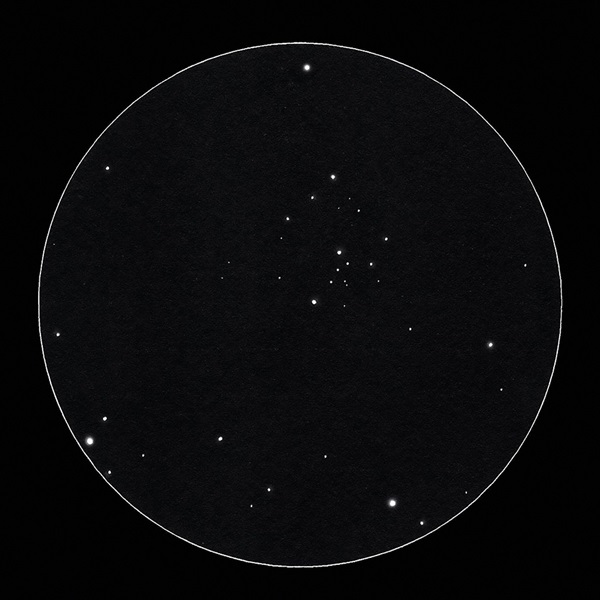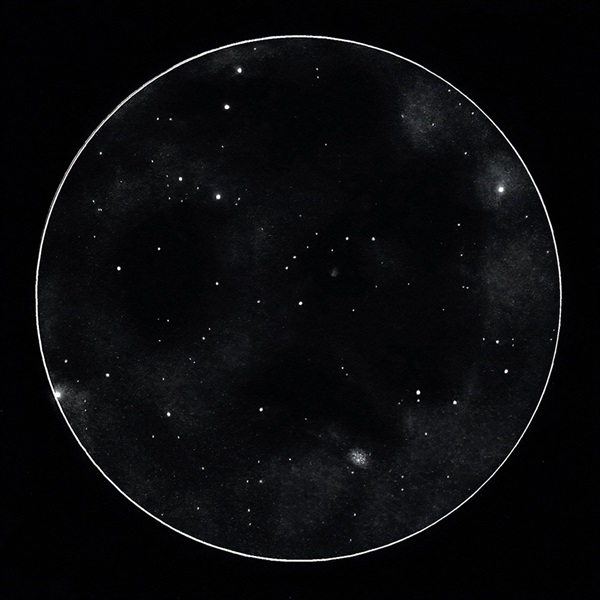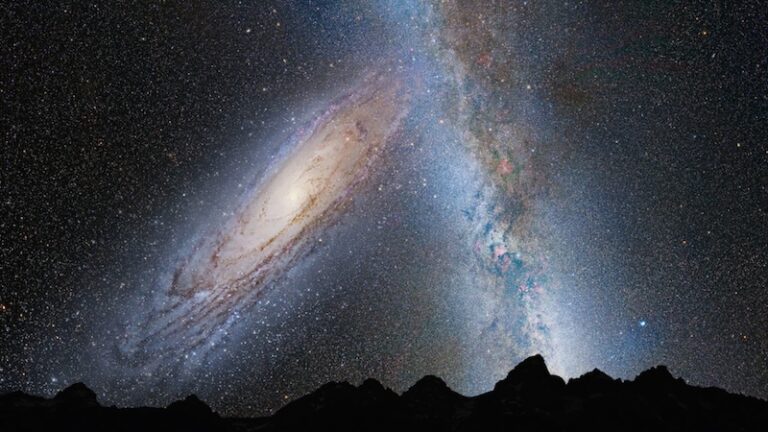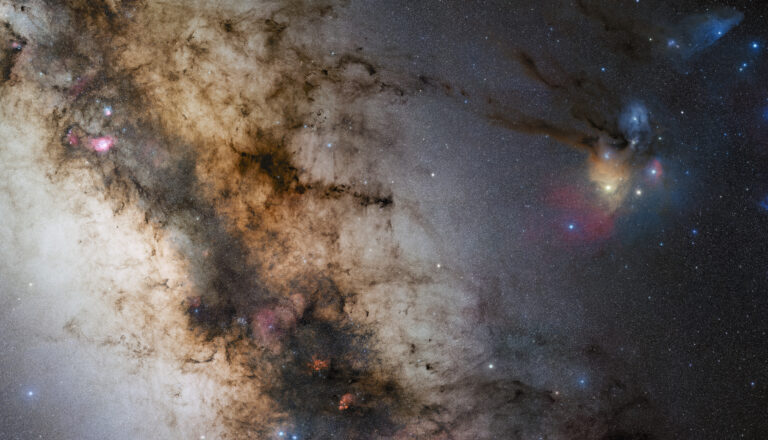Key Takeaways:
As an example, let’s take a look at the magnitude 9.2 open cluster NGC 6704 in the constellation Scutum the Shield. It lies within the large dark nebula complex Barnard 111 that drops down from the Great Rift in Cygnus the Swan into the northern section of the Scutum Star Cloud.
I viewed it through a 4-inch telescope with an eyepiece that gave a fairly low magnification of 26x. The 6′-wide cluster then appeared as a faint smudge a bit more than 1° north of the Wild Duck Cluster (M11) and 1° east-southeast of the magnitude 4.2 star Beta (β) Scuti.
As you spend time sketching this region, your eyes will become more attuned to the soft glow of the stars that surround the patches of dust clouds, making both viewable. The dark nebula complex consists of several smaller Barnard objects. B110, one of the darkest lobes, lies just east of Beta Scuti.
If you use the standard technique I’ve described many times in previous columns (graphite on white paper), you will produce a negative image.
This means the patches of diffuse star glow will appear dark on your paper. In fact, the brighter the glow, the darker you must draw it.
Once your wide-field sketch is complete, swap out your eyepiece, increase the magnification, and take a closer look. At a power of 125x (which I got by using an 8mm eyepiece), the entire cluster resembles a lopsided heart (upside down if your eyepiece orientation places north up) with a thick, dark ring surrounding it.
When you first compare sketches of the same area at various magnifications, the differences between them may surprise you. You’ll have to decide which one you like best. Or, if you have a bit more time, toss in a third sketch at an in-between magnification.
Try this technique, and you might find yourself making several sketches of the same area to add to your observing log. Better yet, share them with your astronomy friends!












